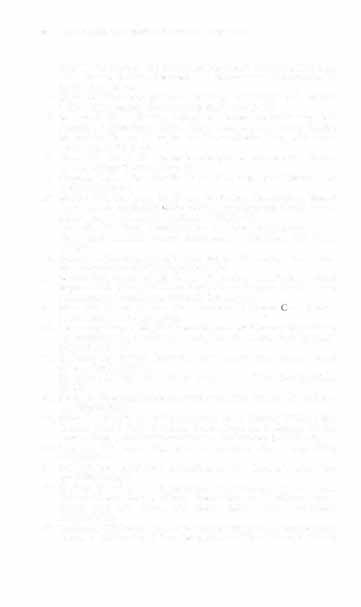i bc27f85be50b71b1 (154 page)
Read i bc27f85be50b71b1 Online
Authors: Unknown

496 AClTfE CARE HANDBOOK FOR PHYSICAL TIiE-RAPISTS
11. Milner SM, Nguyen IT, Herndon ON, Rylah LTA. Radiation injuries
and Mass Casualties. in ON Herndon (ed). Total Burn Care. London:
Saunders, 1996;425.
12. McManus WF, Pruin BA. Thermal Injuries. in OV F eliciano, EE Moore,
KL Martox (eds), Trauma. Stamford, CE Appleton & Lange, 1996;937.
13. Marvin J. Thermal Injuries. in VO Cardona, PO Hum, PJ Bastnagel
Mason, et al. (cds), Trauma Nursing: from Resuscitation through Rehabiliration (2nd ed). Philadelphia: Saunders, 1994;736.
14. Richard R. Assessment and diagnosis of burn wounds. Adv \Vound Care
1999; 12(9):468-4 71.
15. American Burn Association. Hospital and prehospital resources for optimal care of patients with burn injury: guidelines for development and operarion of burn centers. J Burn Care Rehabil 1990;11(2):98-104.
16. Gordon M, Goodwin CWo Burn management. initial assessment, management, and srabilization. Nurs Clin North Am 1997;32(2):237-249.
17. Kao CC, Garner WL. Acure burns. Plasr Reconsrr Surg 2000;101(7):
2482-2493.
18. Schiller WR. Burn Care and Inhalarion Injury. In A Grenvik (cd), Texrbook of Critical Care (4rh ed). Philadelphia: Saunders, 2000;365-377.
19. Desai MH, Herndon ON. Bums. In DO Trunkey, FR Lewis, BC Decker
(cds), Current Therapy of Trauma (3rd ed). Philadelphia: Mosby, 1991;315.
20. Abraham E. Toxic Gas and inhalation Injury. In BE Brenner (cd). Comprehensive Management of Respiratory Emergencies. Rockville, MO: Aspen Publications, 1995;241.
21. Traber DL, Herndon ON. Parhophysiology of Smoke Inhalarion. In EF
Haponik, AM Munster (cds), Respiratory Injury: Smoke Inhalation and
Burns. New York: McGraw-Hili, 1990;61.
22. Crapo RO. Causes of Respiratory Injury. In EF Haponik, AM Munster
(cds), Respiratory Injury: Smoke Inhalation and Burns. New York:
McGraw-Hili, 1990;47.
23. Ahrns KS, Harkins DR. Initial resuscitation after burn injury: therapies,
strategies, and controversies. MCN Clin Issues 1999;10:46-60.
24. Edlich RF, Moghrader JC. Thermal Burns. In P Rosen (ed), Emergency
Medicine Concepts and Clinical Practice, Vol. 1 (4th ed). St. Louis:
Mosby, 1998;941-953.
25. Jordan BS, Harrington DT. Management of the burn wound. Nurs Clin
North Am 1997;32(2):251-271.
26. Linares HA. Pathophysiology of Burn Scar. In ON Herndon (ed), Toral
Burn Care. London: Saunders. 1996;383.
27. Wild B, Kemp H. Skin cultures in burns care nursing. Nurs Times
1999;95(36):46-49.
28. Miller SF, Sraley MJ, Richard RL. Surgical Management of rhe Burn
Parient. In RL Richard, MJ Sraley (eds), Burn Care and Rehabilirarion
Principles and Practice. Philadelphia: F A Davis, 1994; 177.
29. Kagan RJ. Skin substitutes: implications for burns and chronic wounds.
Adv Wound Care 1999;12(2):94-95.
30. Richard RL, Staley MJ. Burn Patient Evaluation and Treatmcnc Planning. In RL Richard, MJ Staley (cds), Burn Care and Rehabilitation Principles and Practice. Philadelphia: F A Davis, 1994;20 1.





BURNS AND WOUNDS
497
3 J. Micheletti G. Ulcers of the Lower Extremity. In PP Gogia. Clinical
Wound Management. Thorofare, N]: Slack, 1995;105-106.
32. McCulloch ]M. EvaluatIOn of Patients with Open Wounds In LC Kloth,
KH Miller. Wound Healing: Alternatives in Management. Philadelphia:
FA Davis, 1995; I 18.
33. Sibbald RG. An approach co leg and foot ulcers: a brief overview.
Ostomy Wound Manage 1998;44(9):28-32, 34-35.
34. Sibbald RG. Venous Leg Ulcers. Ostomy Wound Manage 1998;44(9):
52-64.
35. Donayre CEo Diagnosis and Management of Vascular Ulcers. In C Sussman, B Bates-Jensen. Wound Care: A Collaborative Practice Manual for Physical Therapists and Nurses. Gaithersburg, MD: Aspen Publishers,
1998;310.
36. Kosiak M. Etiology and pathology of ischemic ulcers. Arch Phys Med
Rehah,l 1959;40:62-69.
37. Feedar JA. Prevemion and Management of Pressure Ulcers. In LC Kloth,
KII Miller, Wound Healmg: Alternatives in Management. Philadelphia:
FA Davis, 1995; 187-193.
38. Leigh lH. Pressure ulcers: prevalence, etiology, and treatmenr modalities. A review. Am] Surg 1994;167(l A):25S-30S.
39. Bolander VP (ed). Sorensen and Luckmnl1l1's Basic Nursing. Philadelphia: Saunders, 1994;742.
40. Feedar JA. Prevention and Managemenr of Pressure Ulcers. In LC Kloth,
KII Miller, Wound Henling: Alternatives in Management. Philadelphia:
FA Dav,s, 1995; 193-195.
41. The National Pressure Ulcer Advisory Panel's Summary of the AHCPR
Clinical Practice Guideline. Pressure Ulcers in Adults: Prediaion and Prevention (AI ICPR Publication No. 92-0047). Rockville, MD. May 1992.
42. Brown AC, Sibbald RG. The diabetic neuroparhic ulcer: an overview.
Ostomy Wound Manage 1999;45(Suppl I A):6.
43. Levin ME. Preventing amputation in the patient with diabetes. Diabetes
Care 1995;18(10);1383-1394.
44. D.lI1iels TH.. Diaberic Foot Ulcerations: An Overview. Ostomy Wound
Manage 1999;44(9):77.
45. Weiss EL Connective Tissue in Wound Healing. In LC Kloth, KH
Miller, Wound Healing: Alternatives in Management. Philadelphia: FA
Davis, 1995;26.
46. L,mg P. Diabetic foot ulcers. Am] Surg 1994,167(IA):31.
47. Levin ML, O'Neal LW, Bowker ]H. The Diabetic Foot (5th ed). St.
LoUIS: Mosby, 1993.
48. Catanzanti AR, Haverstock BD, Grossman JP, Mendicino RW. Off
loading techniques in the treatment of diabetic plantar neuropathic foot
ulceration. Adv Wound Care 1999;12(9):452.
49. Kloth LC, McCulloch ]M. The InAammatory Response to Wounding. In
LC Kloth, KH M,lIer (cds), Wound Healing: Alternatives in Management. Ph.Iadclphia: FA Davis, 1995;3-15.
50. Weiss EL. Connective Tissue in Wound Healing. In LC Kloth, KH Miller
(cds), Wound Healing: Alternatives in Management. Philadelphia: FA
Davis, 1995; I 6-31.


498 ACUTE CARE HANDBOOK FOR PHYSICAL THERAPISTS
51. Daly TJ. Contraction and Re-Epithelialization. In LC Kloth, KH Miller
(cds), Wound Healing: Alternatives in Management. Philadelphia: FA
Davis, 1995;32-46.
52. Gogia PP. Physiology of Wound Healing. In PP Gogia (ed), linical
Wound Man3gement. Thorofare, NJ: Slack, 1995; 1-12.
53. Sussman C. Wound Healing Biology and Chronic Wound Healing. In C
Sussman, B Bates·Jensen (cds), Wound Care: A Collaborative Practice
Manual for Physical Therapists and Nurses. Gaithersburg, MD: Aspen
Publishers, 1998;31-47.
54. Keast DH, Orsted H. The basic principles of wound care. Ostomy
